Occupational Safety Training for Soldering Iron Operation
99,000 ₫
Note: The price above is calculated per person and may fluctuate depending on the number of participants in the course and market conditions. For more accurate pricing support, please refer to the price list or contact our consulting staff directly.
Occupational safety is an important issue when operating a soldering iron and must be addressed promptly to ensure the health and safety of workers and enhance the reputation of businesses here. The Occupational Safety Training course is one of the effective solutions to raise awareness of how to prevent workplace accidents for workers operating a soldering iron.
Table of Contents
Toggle1. Overview of the Soldering Iron
a. What is a Soldering Iron?
A soldering iron is a tool commonly used for soldering and joining electronic components, cables, or other materials by using solder to connect them. Soldering irons are widely used in electronics, refrigeration, electronics repair, and various other industries.
A soldering iron consists of a heated tip made from a good heat-conductive material such as copper or stainless steel, connected to a power source to generate heat. When the soldering iron is plugged in and applied to the material to be soldered, it produces enough heat to melt the solder. The molten solder is then used to create an electrically conductive connection between parts or materials.
Soldering irons come in various types and sizes depending on the application. Common types include handheld soldering irons and pen-style soldering irons. Handheld irons are typically used for small, detailed work, while pen-style irons are used for general and larger soldering tasks.

b. How a Soldering Iron Works
The principle of a soldering iron is based on using high temperatures to melt solder (usually tin-based) and join parts or materials together. Below is a detailed explanation of how a soldering iron works:
- Heat source: The soldering iron has a tip made from a heat-conductive material like copper or stainless steel. The tip is connected to a power source via a conductor. When plugged in, electrical energy passes through the tip and converts into high heat.
- Heat transfer: The heat generated at the tip is transferred to the solder through the soldering iron’s conductive end. This end is usually made from high-heat-resistant materials or alloys that do not melt. It holds the solder and transfers heat from the tip to the solder.
- Melting the solder: Solder typically has a low melting point, around 183°C (361°F). When the tip temperature exceeds the solder’s melting point, the solder becomes liquid and spreads to cover the surfaces to be joined.
- Connection: When the solder is molten, the user can place it on the surfaces to be joined. As the solder cools and solidifies, it creates an electrically conductive joint between parts or materials, resulting in a strong, reliable solder connection.

c. Industries Using Soldering Irons
Soldering irons are widely used across multiple industries and applications. Key industries include:
- Electronics: Soldering irons are essential for manufacturing and repairing electronic devices such as PCBs, electronic components, and cables.
- Refrigeration and mechanical engineering: Used for assembling and repairing HVAC systems, refrigerators, and related equipment.
- Automotive repair: Used for soldering tasks on car frames and components.
- Manufacturing industry: Used to assemble and join metal parts during production.
- Electrical industry: Used for connecting electrical cables and equipment in construction and maintenance projects.
- Metal fabrication and machining: Used to join metal parts during machinery fabrication and repair.
- Wood product manufacturing and repair: Used to join wood and metal parts in furniture and other wood products.
- Research and development: Used in labs and research centers to create prototypes and connect components during product development.
2. Overview of Occupational Safety Training for Soldering Iron Operation
a. What is Occupational Safety Training?
- Occupational safety training for operating soldering irons is designed to raise awareness of workplace hazards and accident prevention for employees. Workers directly operating soldering irons belong to Group 3.
- Safety training courses help employees recognize and avoid hazards, reducing the risk of workplace accidents during work.
REGISTER FOR OCCUPATIONAL SAFETY TRAINING SERVICE
b. Training Duration
Initial Safety Training Duration
- Total training time is at least 24 hours, including testing time.
- 8 hours of theory on policies and laws regarding occupational safety and hygiene
- 8 hours of basic occupational safety and hygiene theory
- 4 hours of specialized training theory
- 2 hours of practical specialized training
- 2 hours of final theoretical exam
The safety training center divides the schedule into several sessions based on employee availability. Typically, there are 6 sessions over 3 days, provided the company arranges continuous training time.
Periodic Safety Training Duration
- Before the occupational safety card expires, workers must undergo periodic safety training for re-certification. Periodic training duration must be at least 50% of the initial training time.
Explanation: The total duration of periodic safety training is at least 12 hours, including testing time. After completing the training and passing the exam, workers are reissued or have their occupational safety card renewed.
c. Training Content
| No. | TRAINING CONTENT | TRAINING DURATION (HOURS) | |||
| Total | Breakdown | ||||
| Theory | Practice | Test | |||
| I | Policies and laws on occupational safety and hygiene | 8 | 8 | 0 | 0 |
| 1 | Overview of legal documents on occupational safety and hygiene. | 6 | 6 | ||
| 2 | Standards and technical regulations on occupational safety and hygiene. | 1 | 1 | ||
| 3 | Specific regulations by state management agencies on safety and hygiene when constructing, expanding, or renovating facilities, using and maintaining machinery and materials with strict safety requirements. | 1 | 1 | ||
| II | Basic knowledge of occupational safety and hygiene | 8 | 8 | 0 | 0 |
| 1 | Basic knowledge of workplace hazards. | 4 | 4 | ||
| 2 | Methods to improve working conditions. | 1 | 1 | ||
| 3 | Safety culture in production and business. | 1 | 1 | ||
| 4 | Rights and duties of employers and employees; policies on occupational safety and hygiene; functions of the safety network and safety officers. | 1 | 1 | ||
| 5 | Workplace safety rules, signs, instructions, use of safety equipment and PPE; first aid skills; prevention of occupational diseases. | 1 | 1 | ||
| III | Specialized training content | 6 | 4 | 2 | 0 |
| Comprehensive knowledge of machines, equipment, hazardous substances; risk assessment and management; safe working procedures for machines, equipment, and materials with strict safety requirements. | 6 | 4 | 2 | ||
| IV | Final safety training test | 2 | 2 | 0 | 0 |
| Total | 24 | 22 | 2 | ||
See more training content of all 6 groups
d. Occupational Safety Card
After completing the safety training course and passing the exam, workers will be issued a Group 3 Occupational Safety Card (commonly called occupational safety certificate for Group 3).
The Group 3 safety card shows personal information such as name, date of birth, job, and specific working environment, as well as training duration, red stamp, and signature confirming completion of the training.
According to regulations in Clause 2, Article 24 of Decree 44/2016/ND-CP, there are two cases:
- If the employer and employee have a labor contract, the employer must stamp and sign the safety card for Group 3 trainees after completing the training and passing the test.
- If the worker is freelance or seasonal, without a labor contract, the training unit must stamp and sign the safety card after the worker completes the training and passes the test.

3. Hazards When Operating a Soldering Iron
When operating a soldering iron, several hazards may occur if safety rules are not followed. Below are some common hazards when using a soldering iron:
- Fire and explosion risk: A soldering iron requires heat to operate, generating high temperatures. Using it near flammable or explosive materials may cause fire or explosions.
- Burns: The soldering iron tip can become extremely hot, and without proper safety measures, users may suffer burns from contact with the tip or molten solder.
- Toxic fumes: During soldering, toxic fumes or smoke may be produced from solder and the materials being soldered. Inhaling or contacting these fumes can harm health.
- Electric shock risk: Soldering irons require electricity to function, and improper handling may lead to electric shock.
- Eye protection: Soldering generates bright light that can damage eyes. Users should wear protective eyewear to prevent injury.
- Waste management: Waste from soldering, including solder fragments and materials, can harm the environment and health if not properly managed.

4. Occupational Accident Control Measures When Using a Soldering Iron
To control and reduce the risk of accidents when using a soldering iron, operators should follow these safety measures:
- Training and instruction: Ensure that all soldering iron users are properly trained on operating the device and following safety rules. This includes understanding how to use the iron, handling solder, and following safe working procedures.
- Use of Personal Protective Equipment (PPE): Operators should wear appropriate PPE, including safety goggles, welding masks, protective gloves, aprons, and safety shoes. PPE helps protect against fire, burns, and exposure to toxic materials.
- Equipment inspection: Before use, check the soldering iron to ensure proper operation, including inspecting the tip, power cord, and other components for damage or defects.
- Waste management: Soldering waste, including solder fragments and materials, should be safely managed and disposed of according to local regulations.
- Work in a well-ventilated environment: Ensure good air circulation to reduce the risk of inhaling toxic fumes and smoke. Use ventilation systems or fans if necessary.
- Avoid working alone: Work with others nearby for support in case assistance is needed.
- Turn off the soldering iron after use: Ensure the soldering iron is completely powered off to avoid fire or electric shock risks.
- Follow industry-specific safety rules: Different industries have specific safety protocols for using soldering irons. Follow your industry’s guidelines carefully.
- Regular inspection of soldering irons to detect safety issues such as wear or mechanical faults early, reducing occupational accident risks.
5. Benefits of Occupational Safety Training
An Toàn Nam Việt provides businesses with the following benefits upon completing occupational safety training courses according to Decree 44/2016/ND-CP regarding Occupational Safety and Hygiene:
- Workers can recognize potential occupational hazards and take preventive measures to avoid accidents.
- Businesses can establish risk prevention measures in production, operation, and maintenance processes.
- Reduce costs associated with workplace safety incidents.
- Continuous production ensures higher labor productivity and product quality.
- Compliance with occupational safety laws minimizes legal risks.
- Enhances business reputation and professionalism, boosting the brand’s image.
Nam Việt’s training courses are solutions to help individuals prevent external hazards that could lead to injuries or even fatalities.
REGISTER FOR OCCUPATIONAL SAFETY TRAINING SERVICE
6. Customer Feedback After Completing Training
An Toàn Nam Việt has years of experience accompanying businesses across Vietnam, especially in southern provinces. This responsibility is precious to Nam Việt, which is why our Occupational Safety Training is increasingly professional. Our growth is driven by positive feedback and suggestions from partner businesses. Below are testimonials from our clients.
See more customer interviews after using our service at An Toàn Nam Việt
7. An Toàn Nam Việt’s Occupational Safety Training Capability
An Toàn Nam Việt is a reputable and high-quality occupational safety training center in Vietnam. Training sessions are continuously conducted at factories, workshops, and construction sites across all 63 provinces.
REGISTER FOR OCCUPATIONAL SAFETY TRAINING SERVICE
Training License
- An Toàn Nam Việt has been inspected and certified by the Vietnam Department of Safety under the Ministry of Labor, Invalids and Social Affairs, confirming our capacity to conduct occupational safety and hygiene training.

Materials and Lectures
- Training materials for occupational safety courses are reviewed to ensure accurate and effective knowledge transfer.
- Instructors follow standardized teaching methods developed by An Toàn Nam Việt for maximum learning efficiency.
Facilities
- Control of classroom factors improves teaching efficiency and knowledge absorption.
- Our training facilities feature spacious classrooms with proper lighting and teaching equipment.
8. Nationwide Reputable and Quality Safety Training Center
At An Toàn Nam Việt, we always prioritize professional dedication to occupational safety training. For us, imparting knowledge to help workers protect themselves and equip them with safety skills for their livelihoods contributes to building the nation.
To ensure effective training, we meticulously prepare every detail, no matter how small — from tools, teaching equipment, and materials to curriculum, documents, audio, and lighting.
Our occupational safety instructors are experts with many years of experience in the field. Some even have research projects identifying hazards across various industries and methods to prevent them.
Lectures are based on real-world experience and delivered in a lively, easy-to-understand manner for workers. This approach allows learners to feel comfortable and absorb knowledge effectively. Naturally, the content is always aligned with Decree 44/2016/ND-CP.
As a result, workers gain awareness of multiple hazard prevention measures and learn how to protect themselves while applying them appropriately in their actual work.
Our Safety Training Center is proud to provide professional, reputable occupational safety training services with the following advantages:
- Competitive training costs while ensuring high training quality.
- Flexible training schedules accommodating the production needs of companies.
- Fast and legally compliant procedures for issuing occupational safety certificates.
- Experienced instructors with many years in the profession.
- Classrooms controlled for factors that affect training, improving teaching efficiency and knowledge retention.
- Lectures tailored to occupational safety needs of enterprises.
- An Toàn Nam Việt works with dedication and professionalism to provide accurate and prompt support to clients.

9. Additional References for Occupational Safety Training Materials
- Occupational Safety Training Materials Collection
- Occupational Safety Materials for Soldering Iron Operation
- Occupational Safety Training Test Collection
- Multiple-Choice Test for Soldering Iron Operation Safety
- Slides for Occupational Safety Training on Soldering Iron Operation
1 review for Occupational Safety Training for Soldering Iron Operation
No comments yet

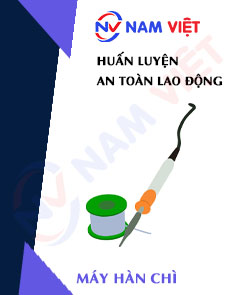
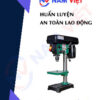





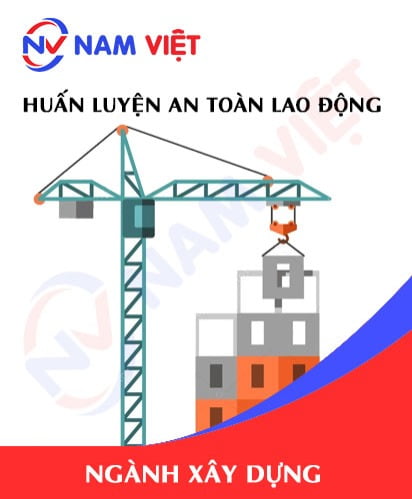


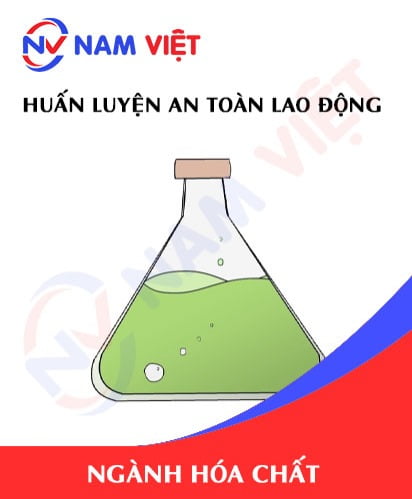

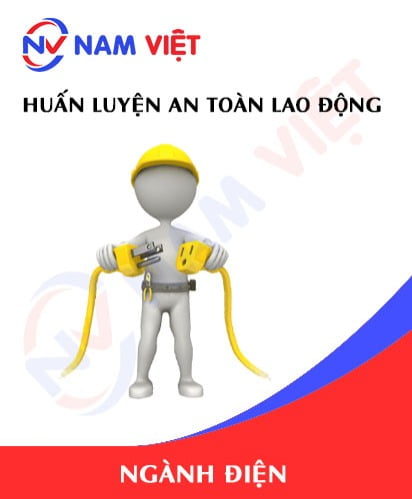

phanminhhang341
Good labor safety unit